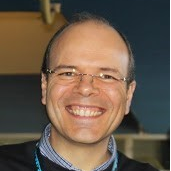Cultural Heritage at Risk - Perspectives on Technologies, Materials, Modelling and Digitalization
A special issue of Heritage (ISSN 2571-9408). This special issue belongs to the section "Cultural Heritage".
Deadline for manuscript submissions: closed (31 December 2023) | Viewed by 14100
Special Issue Editors
Interests: cultural heritage; ceramics; glasses; lusters; mortars; pigments; oxides; nanomaterials; nanotechnology; synchrotron radiation; X-ray photo electron spectroscopy; scanning electron microscopy; atomic force microscopy; built heritage
Special Issues, Collections and Topics in MDPI journals
Interests: cultural heritage; mining heritage; mineralogy; crystallography; crystal chemistry; ceramics; glasses; mortars; rock weathering; synchrotron radiation
Special Issues, Collections and Topics in MDPI journals
Interests: material characterization; X-ray diffraction; SEM analysis; ceramics; surface analysis; EDS; ion beam analysis; chemical weathering
Special Issues, Collections and Topics in MDPI journals
Special Issue Information
Dear Colleagues,
The cultural and societal impact of cultural heritage assets has generated an increased interest in the scientific community, promoting innovative approaches to issues raised by the necessity of preserving our identity. Materials research has an unquestionable role in this approach by developing strategies and methodologies, crosslinking different aspects related to cultural heritage materials, attaining a better comprehension of their properties and historical applications, disclosing correlations and interactions between materials and raw materials with different origins, and supporting a compatibility evaluation with new and improved materials in the context of qualified interventions on heritage assets. In recent times, CH is endangered by several different factors, requiring, even more, detailed diagnostics and appropriate solutions to guarantee its preservation and transmission to future generations.
This Special Issue provides an appropriate forum for presenting multidisciplinary cutting-edge scientific and technological approaches to cultural heritage concerns and perspectives involving the large and varied community of international experts in art, archaeology, ancient technology, materials, conservation, weathering, restoration strategies, climate change and anthropic pressure. Within the framework of the current complexity of the economic and social context, this special issue intends to address the most pressing concerns facing CH and to point to possible new routes, bridging all areas of knowledge, presenting updated reflections, alongside the dissemination of good practices, by promoting a close cooperation between CH researchers, professionals, students, policymakers and authorities. The attendees of the EMRS Spring Meeting 2023 Symposium U, as well as other interested colleagues, are encouraged to submit for publication their contributions on the several hot topics, including but not restricted to:
- Materials and methodologies;
- Conservation and restoration;
- Sustainability;
- Climate impact;
- Risk assessment;
- Modelling and theoretical approaches;
- Multi-scale imaging;
- Monitoring and remote sensing;
- Dating and authenticity;
- Geoarchaeology;
- Archaeometry;
- Historical studies;
- Cultural tourism and economy.
Dr. Giuseppina Padeletti
Dr. João Pedro Veiga
Dr. Anne Bouquillon
Guest Editors
Manuscript Submission Information
Manuscripts should be submitted online at www.mdpi.com by registering and logging in to this website. Once you are registered, click here to go to the submission form. Manuscripts can be submitted until the deadline. All submissions that pass pre-check are peer-reviewed. Accepted papers will be published continuously in the journal (as soon as accepted) and will be listed together on the special issue website. Research articles, review articles as well as short communications are invited. For planned papers, a title and short abstract (about 100 words) can be sent to the Editorial Office for announcement on this website.
Submitted manuscripts should not have been published previously, nor be under consideration for publication elsewhere (except conference proceedings papers). All manuscripts are thoroughly refereed through a single-blind peer-review process. A guide for authors and other relevant information for submission of manuscripts is available on the Instructions for Authors page. Heritage is an international peer-reviewed open access monthly journal published by MDPI.
Please visit the Instructions for Authors page before submitting a manuscript. The Article Processing Charge (APC) for publication in this open access journal is 1600 CHF (Swiss Francs). Submitted papers should be well formatted and use good English. Authors may use MDPI's English editing service prior to publication or during author revisions.







